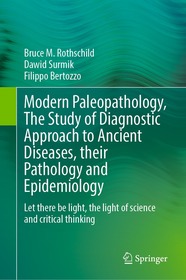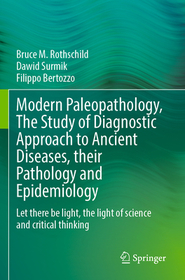
Modern Paleopathology, The Study of Diagnostic Approach to Ancient Diseases, their Pathology and Epidemiology
Let there be light, the light of science and critical thinking
- Publisher's listprice EUR 181.89
-
75 438 Ft (71 846 Ft + 5% VAT)
The price is estimated because at the time of ordering we do not know what conversion rates will apply to HUF / product currency when the book arrives. In case HUF is weaker, the price increases slightly, in case HUF is stronger, the price goes lower slightly.
- Discount 12% (cc. 9 053 Ft off)
- Discounted price 66 386 Ft (63 224 Ft + 5% VAT)
Subcribe now and take benefit of a favourable price.
Subscribe
75 438 Ft

Availability
printed on demand
Why don't you give exact delivery time?
Delivery time is estimated on our previous experiences. We give estimations only, because we order from outside Hungary, and the delivery time mainly depends on how quickly the publisher supplies the book. Faster or slower deliveries both happen, but we do our best to supply as quickly as possible.
Product details:
- Edition number 2023
- Publisher Springer International Publishing
- Date of Publication 8 September 2023
- Number of Volumes 1 pieces, Book
- ISBN 9783031286230
- Binding Hardback
- No. of pages851 pages
- Size 235x155 mm
- Weight 1490 g
- Language English
- Illustrations XXXVI, 851 p. 209 illus., 25 illus. in color. Illustrations, black & white 494
Categories
Long description:
Table of Contents:
Part 1. Scientific basis for paleopathology.- Chapter 1: Philosophy of Science.- Chapter 2: Osseous structures and their response repertoire.- Chapter 3: Documentation of preservation.- Chapter 4: Postmortem alterations of bone (Diagenic Changes) and their interpretation.- Chapter 5: Misconceptions and false trails.- Chapter 6: Diagnostic approach/techniques.- Part 2. Holistic analysis of pathology/diseases with significant skeletal impact.- Chapter 7: Mechanically-derived phenomena.- Chapter 8: Inflammatory arthritis.- Chapter 9: Infectious disease.- Chapter 10: Hematologic.- Chapter 11: Metabolic/Endocrine.- Chapter 12: Vascular phenomena.- Chapter 13: Bone neoplasia and skeletal dysplasias.- Chapter 14: Cranial phenomena.- 15. Case Studies.
More











